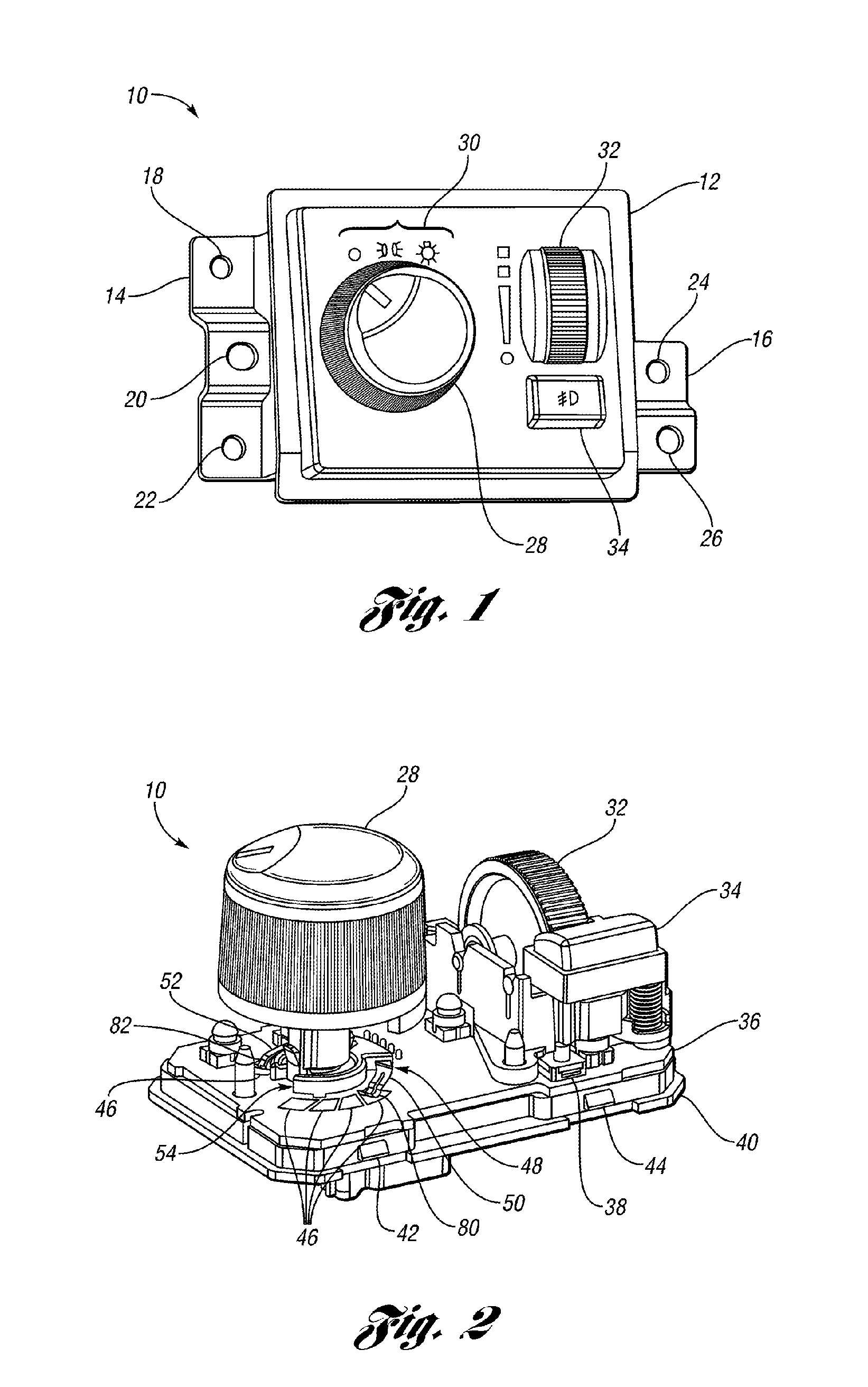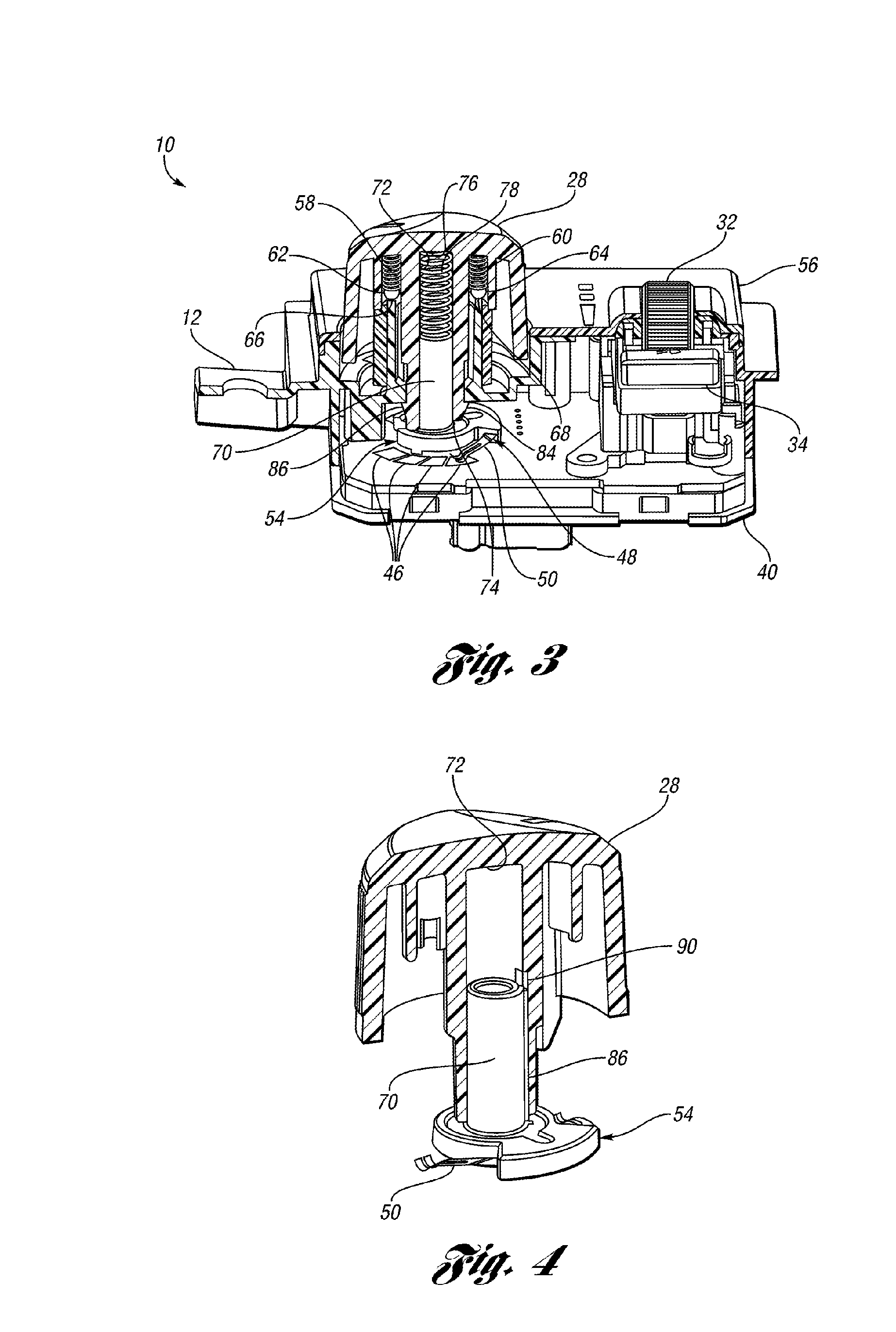Electrical switch
- Summary
- Abstract
- Description
- Claims
- Application Information
AI Technical Summary
Benefits of technology
Problems solved by technology
Method used
Image
Examples
Embodiment Construction
)
[0014] FIGS. 1 shows an electrical switch 10 in accordance with one embodiment of the present invention. The switch 10 is a compact device contained within a housing 12 having a pair of flanges 14, 16, for mounting the switch 10 to a support structure. Each of the flanges 14, 16 includes a number of apertures 18, 20, 22, 24, 26 disposed therethrough to receive a fastening element. The switch 10 is a type which may be conveniently used in a vehicle, for example, as a headlamp switch. The switch 10 includes a rotatable knob 28 which can be rotated to select a variety of switch positions, indicated by the icons 30 on the housing 12. The housing 12 may be conveniently made by an injection molding process, and it may be particularly convenient to use a polycarbonate (PC) material that is translucent, so that the icons 30 can be backlit for easy viewing by the vehicle operator during times of limited ambient light.
[0015] To further facilitate use of the space and components of the switc...
PUM
 Login to View More
Login to View More Abstract
Description
Claims
Application Information
 Login to View More
Login to View More - R&D
- Intellectual Property
- Life Sciences
- Materials
- Tech Scout
- Unparalleled Data Quality
- Higher Quality Content
- 60% Fewer Hallucinations
Browse by: Latest US Patents, China's latest patents, Technical Efficacy Thesaurus, Application Domain, Technology Topic, Popular Technical Reports.
© 2025 PatSnap. All rights reserved.Legal|Privacy policy|Modern Slavery Act Transparency Statement|Sitemap|About US| Contact US: help@patsnap.com



